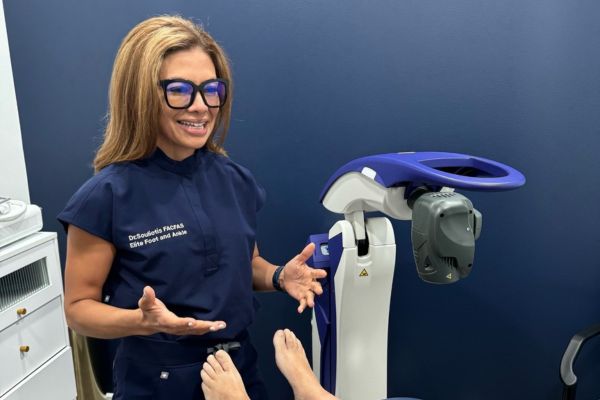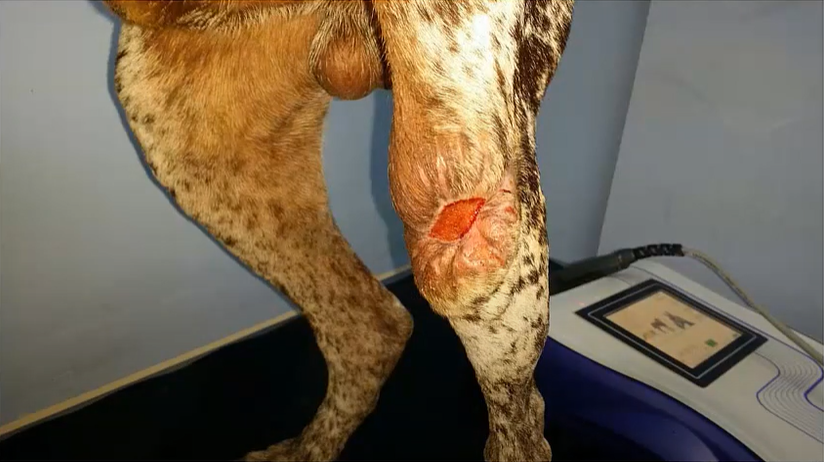Based on over 30 years of research and development, MLS® Laser Therapy offers physicians a drug-free and non-invasive solution to pain management.
To answer some frequently asked questions, we spoke with John Knab, MD at the Center of Pain Management and Regenerative Medicine in Wilmington, NC.
Dr. Knab has been offering treatments with the Robotic M6 MLS Therapy Laser since 2019 and provides insight on implementing this modality into the pain management practice.

John Knab, MD
Wilmington, NC
Why did you look to add a therapy like the MLS Laser to your practice?
There are many treatment gaps in spinal and musculoskeletal medicine today. Patients are realizing that traditional pain management options like opioids, steroids, and surgery have many drawbacks including side effects, unpredictable outcomes, and even addiction. As patients become better educated and more engaged in their care, they’re searching for options that don’t include medications, surgery, or downtime.
Another problem that we are encountering more frequently is the onerous insurance approval process, even for simple things like trigger point injections. Even worse, some of the routine procedures used to treat painful conditions are being denied outright by insurance companies. It is unbelievable, actually!
A great thing about laser therapy is that we don’t need to ask permission to apply it in clinically appropriate situations. If a clinician feels that MLS Laser Therapy would benefit their patient, it can be applied during that visit, at the point of care, without having to go through needless approval processes. The patient can be treated immediately, like medicine used to be!
We have a wide variety of patients in our practice. Some are young and athletic; Others are old and frail. MLS Laser Therapy is applicable across our entire patient population in our clinic. Whether it is an in-season athlete suffering from an acute strain/sprain or an elderly patient suffering from neuropathic pain due to Eagle syndrome, MLS is very “broad-spectrum” in terms of its utility.
How did you incorporate MLS into practice operations?
After getting our device four years ago, the local representative, Matthew Fitzgerald, who has been with us from the start, helped us get up and running with the different protocols available. The overall training process took just a day or so and we were self-sufficient within the first week. He also put us in touch with other physicians using the device.
We started using it in any clinical situation calling for it and quickly found out that it’s incredibly effective for acute strain/sprains and acute sciatica.
MLS is a great fit for our practice because we’re very busy. Even though we employ a lot of medical assistants, they’re usually busy helping us and don’t have time to sit at the bedside of a patient getting laser for 10 to 20 minutes.
Since the M6 MLS Laser is a robotic device, clinic staff can let the robot provide laser therapy autonomously! I would say that 90% of my staff knows how to use the laser on their own.
What is your approach to patient education?
Most of my patients are aware of laser therapy and may even come in asking about it. We have patient education material in our lobby and on our walls, and I have made some patient education videos as well. Patients are incredibly receptive to laser therapy, even though its “not covered by insurance”. At the end of the day, patients want what’s best for them. Additionally, when they realize that one of my main motivations for getting laser was so that I could treat myself, they understand that I really believe in its potential to help the body heal itself.
What are some of the most common conditions that you treat with MLS?

We treat a lot of spinal pain and find that MLS is a great solution for cervical and lumbar spine pain. For acute episodes, patients come in 3 times a week, getting anywhere from 10 to 20 minutes of laser. This is a bit more aggressive than some of the traditional protocols however I have never seen anyone get “too much laser” with these protocols in the acute setting. We will typically see a patient for 2 or 3 weeks after an acute injury, but sometimes patients are feeling better after the first week.
The robotic M6 MLS Laser is also a great tool for acute shoulder pain, especially with rotator cuff tears or bursitis. If the patient is too uncomfortable to lie prone or supine during treatment, the laser can be positioned effectively with the patient sitting up in a chair. Sometimes we might move the laser from front to back during the session, but for the most part the robot operates independently. Patients really love it.
Are there other adjunctive therapies that work well with MLS?
In terms of adjunctive therapies, we are fellowship trained interventional spine and musculoskeletal experts, so we use a lot of PRP (Platelet Rich Plasma) in our practice. We find that pairing these treatments with MLS Laser both before and after interventions has enhanced our outcomes dramatically. Having patients come in for laser therapy after PRP procedures also helps us to keep in touch with our patients during their recovery.
Learn more about the benefits that MLS Laser Therapy can offer to the pain management practice.



